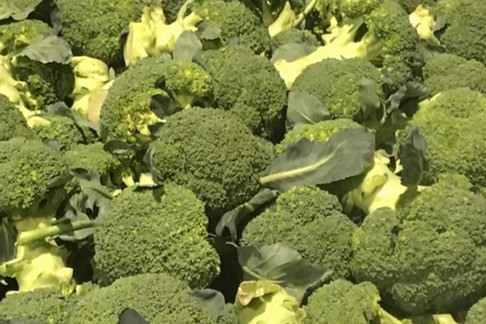One of the major issues that the industry and supply chain have to address in terms of increasing consumption is the misconception that fresh produce is too expensive, according to the Fruit & Vegetable Consortium.
Managing Director of the FVC, Justine Coates told Hort Connections that the organisation recently completed a national strategy, a national baseline and a six-year program to increase vegetable consumption within Australia. She added that today consumers are eating 2.4 serves (75g per serve) per day, but if every consumer in Australia were to increase by just one serving per day, that would equate to nine billion servings of additional vegetables per year, or around 670,000 tonnes of volume.
"If we were able to lift that above the 3.4 and over a longer horizon add another 1.6 serves (to get to five per day), the value of that would be an incremental 27 billion serves or 1.9 million tonnes of vegetables consumed," Ms Coates said. "So, it's good to know what people are actually buying, but when we actually look at what is happening with their baskets, that tells even more of a story. The media has spent a lot of time reporting on the cost of living crisis and what that means for Australians, but we found that vegetables only cost around 68 cents per serve - so why aren't people buying them? We can see the average weekly shop, which we also know has dropped more recently, of a basket of around $220, consumers are only buying $30 of vegetables within that basket. When we start to get under the skin of what's actually happening with consumption, we know that there is a real rallying cry that we need help. We need to actively work together, but it is going to be a big effort to turn around what has been happening."
The FVC is a national membership-based organisation, operating under the auspice of AUSVEG, starting at the paddock right through to what goes on a consumer's plate. There are now over 250 organisations that actively support the consortium. Ms Coates says the journey to create a program to increase vegetable consumption started two years ago, based on the concept of Plus One Serve of Vegetables by 2030. So, the program will run over six years, will be funded by Hort Innovation, and will run across five settings.
"The principle or philosophy that we have is that telling consumers lots of stuff but not meeting them where they are is not going to drive change," Ms Coates said. "So we will be executing this program within the key settings where people eat, live, work and play. The five that we have selected as a priority are: the three education levels from primary to tertiary, home setting and retail."
Part of the initial research the FVC conducted was by modelling actual consumption figures, and Ms Coates says the results were "incredibly scary". The organisation partnered with End Food Waste Australia, to do a top-down and bottom-up study using material from things like the Hort Innovation Handbook and farmgate figures, to food waste diary data and kerbside bin audits. Then it looked at data from NielsenIQ, Canstar and Fiftyfive5 to complete the research.
"It's not with pleasure but certainly with urgency that I share with you that consumers are not eating 2.4 (serves), but 25 per cent of 'consumption' is going in the bin," she said. "Yes, that's right people are buying more than 2-2.5 serves per person per day, which is declining, but when it comes to what they are actually eating is around 1.79 serves per person per day. The crisis is real and it is getting worse. Together, what we have said is if 1.8 is what we are at today; we know from all the research that plus-one is feasible so we will do our best to put new things into settings to influence kids and their preferences and consumption. Doing single things in schools or in the homes is not going to work, we need to connect them up so we have the ability to extend and impact all the time."

Ms Coates explained that around $100million was being spent per year on vegetable intake programs and that includes retail investment into stores and promotional spending.
"The place we need to be the most focused on is retail and the home," she said. "Over 82 per cent of fresh produce flows ex-farmgate straight into the home and 90 per cent of all vegetables are actually consumed in the home. We know that we need a 275 per cent increase on current investment if we want to achieve a plus one serving of vegetables per person, per day. That optimal investment is around $1billion, incrementally, and would reach 90-95 per cent of consumers. So what's the economic impact assessment? The business case that was done four years ago showed the numbers were pretty impressive. When we do the true baseline, look at the true modelling and build it up the way that we have, the numbers are phenomenal in terms of the opportunity that sits before us. It's not going to be easy, but one extra serve will actually deliver $4.68billion in value. When we look at that for fruit and vegetable growers and industry, that is $3.3billion of incremental value. It will also mean 12,800 jobs in regional communities and around $1.3billion in reduced cost avoided in terms of healthcare. That's just in the six years of the initial program - the results can go even higher in the longer term."
For more information on the FVC or to be part of the program, visit www.thefvc.org.au
